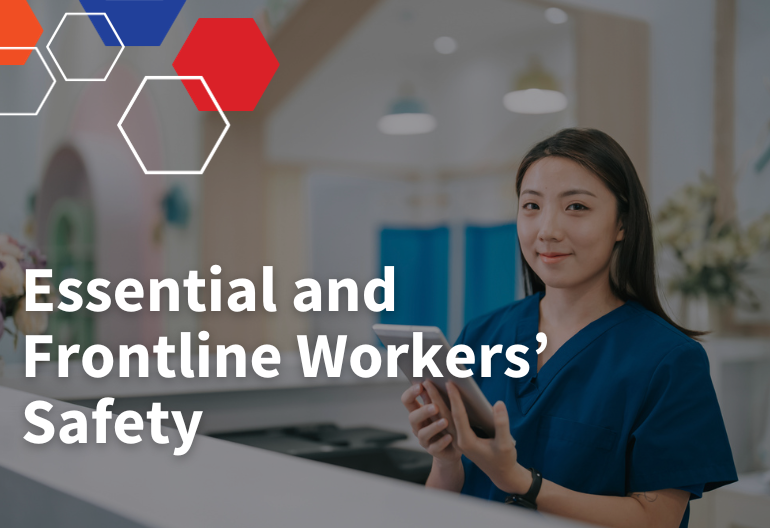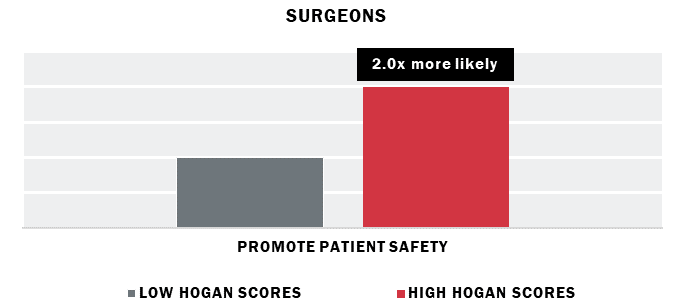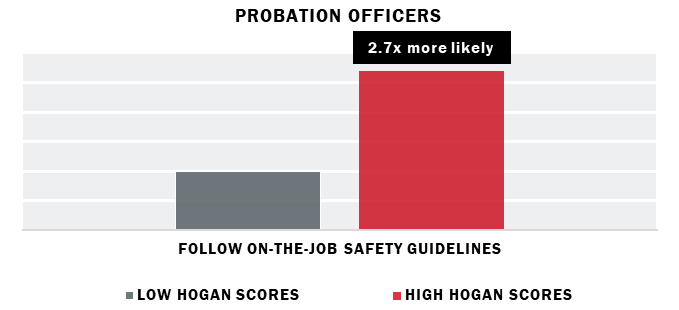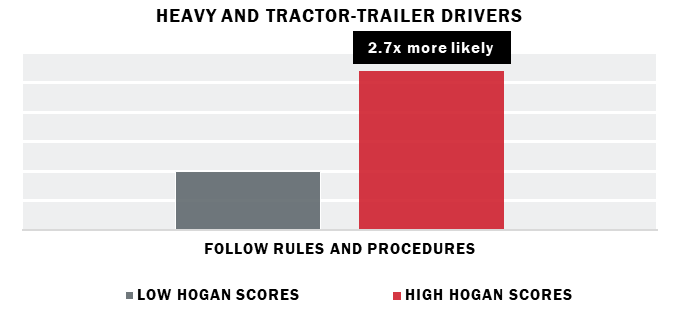Our solutions cover the entire employee lifecycle from selection through to development, focusing on individuals, teams and organisational solutions.
Essential and Frontline Workers’ Safety

The COVID-19 pandemic has shed light on how critical essential and frontline workers are in supporting the health and safety of our communities. Essential organisations and industries are hiring in large numbers to keep up with the demands of their customers and stakeholders. These new demands also require organisations to implement new policies to ensure their customers and workers are healthy and safe from potential infection. Now more than ever, essential organisations need methods to identify workers capable of following and adapting to these new safety policies.
Understanding Safety
When it comes to workplace safety, employee personality and behavior are as relevant as on-the-job training, equipment, and protocols. However, it doesn’t really matter what protocols are in place if employees are not prone to adhere to the protocols. Identifying safety-conscious personnel who will adhere to protocols, as well as people who exhibit potential for dangerous behavior, is a key step toward preventing costly and sometimes fatal accidents. Hogan researchers have distilled six factors that help organisations identify workers who will maintain and contribute to a safe work environment:
- Compliant – The tendency to follow the rules. Low scorers ignore authority and company rules, while high scorers follow guidelines and protocols.
- Strong – The ability to handle stress with confidence. Low scorers tend to panic under pressure and make mistakes, while high scorers are steady and reliable.
- Poised – The ability to handle pressure without becoming irritable. Low scorers lose their tempers, blame others, and make mistakes. High scorers are calm and composed.
- Vigilant – The ability to stay focused when performing monotonous tasks. Low scorers tend to make mistakes because they are easily distracted, while high scorers stick to the task at hand.
- Cautious – The tendency to avoid risk. Low scorers tend to take unnecessary risks, while high scorers carefully weigh all options when facing a risky decision.
- Trainable – The tendency to respond favorably to training. Low scorers are overconfident and difficult to train. High scorers are receptive to advice and genuinely enjoy learning.
Essential and Frontline Worker Safety
Examinations of safety behaviors associated with essential and frontline workers in the medical, protective services, and transportation fields reveal high scorers on the Hogan Safety Report are more likely to encourage and promote safety practices, act professionally and accept responsibility for errors, and avoid taking unnecessary risks. We present examples of safety-specific results for three groups of essential and frontline workers below.
In the medical field, surgeons with high scores on the Safety Report are approximately twice as likely to promote patient safety and are 1.6 times more likely to accept responsibility for errors. Although our overall sample size was too small to confer significance, our evidence suggests nursing aides, orderlies, and attendants who score highly on the Safety Report are approximately 3.5 times more likely to observe and promote safety practices.

Workers in protective services, such as probation officers, who score high on the Cautious subscale are 2.4 times more likely to encourage safe behavior, 3.8 times more likely to avoid taking unnecessary risks, and 2.7 times more likely to follow on-the-job safety guidelines.

Among transportation workers, bus drivers who score high on the Safety Report are twice as likely to work safely and responsibly (according to their supervisors) and 1.8 times more likely to adhere strictly to rules and procedures. Bus drivers who score high on the Compliant subscale are half as likely to be involved in a traffic accident. Heavy and tractor-trailer drivers who score high on the Strong subscale are half as likely to be ticketed for speeding. Heavy and tractor-trailer drivers with high scores on the Cautious subscale are 2.7 times more likely set a good example to other drivers by following rules and procedures. And those with high scores on the overall Safety Report are four times more likely to act predictably and professionally.

Bottom Line
The importance of safe and healthy work environments in essential organisations cannot be underestimated. Hogan understands the core aspects of an individual’s personality that help create and maintain safe work environments. Not only is there evidence that the Hogan Safety Report can work across a broad range of jobs, but Hogan’s Safety Report predicts across a broad range of criteria (supervisor ratings, number of accidents, speeding citations). This ability to predict extends to the subscale level, such as the Cautious subscale, providing an opportunity for more nuanced interpretation.
The broader outlook is that we, as a global society, have entered a new economic environment where safety is an important performance criterion for all essential industries and organisations. Hogan is prepared to apply knowledge from years of research to help navigate this new terrain.
*This blog post was authored by Hogan’s Nathan Hundley and Andrew Blake. It originally was published on Hogan Assessments.
Contact us for more infomation Get certified!

